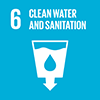June 2022 - You are accessing an old version of our website. The SDGs Voluntary Commitments have been migrated here: https://sdgs.un.org/partnerships
You will be redirected to the new Partnership Platform in 10 seconds.
June 2022 - You are accessing an old version of our website. The SDGs Voluntary Commitments have been migrated here: https://sdgs.un.org/partnerships
You will be redirected to the new Partnership Platform in 10 seconds.
Sahelian pastoral context began in 2007 Laiterie du Berger (LDB) at Richard-Toll (North Ferlo, Senegal). LDB today collects milk from over 800 families twice a day. The major constraint is its seasonality. In the rainy season, the production is high allowing the collection of up to 6,000 liters per day. However, in the dry season, the volumes of milk can drop to less than 1 000 l/d. LDB also seeks to increase collected volumes during the dry season. To assist in this, LDB has increased the following: the density of its collection network; the number of circuits, and the number of farm suppliers.
It is a challenging logistic task to daily collect milk but also to supply dairy cows during the dry season.
To achieve this, the dairy and its partners encourage sedentarisation of a few cows in production, with their calves. On the other hand, the transhumance of most of the herd continues in the dry season. The challenge is therefore limited to how to feed cows (less than ten per farm) in the dry season in an environment almost devoid of natural pastures.
In the collection area, this translates into an increasing use of dry season supplementation: firstly by the agricultural by-products, coming from the nearby irrigated area and the massive use of sugarcane straws. Indeed, LDB signed a contract since 2011 with the main sugar factory in the region, located in Richard-Toll.
The distribution of forages and concentrates is also provided in twenty (20) “Centres de Services de Proximité” (map 1) managed by farmers themselves.
The Global Agenda for Sustainable Livestock (http://www.livestockdialogue.org/) is a multistakeholder partnership with technical Action Networks. This case study belongs to Action Network Restoring Value to Grassland: Private senegalese small dairy factory with support of Danone communities (Social business) for marketing, through partnership with ONG for technical support and with pastoralists for milk-sourcing organized in Cooperative.
Phase 1. Implementation / building a local task force team with CIRAD – UCAD – LDB. This team is working with an intern (graduate from UCAD) in multidimensional conceptual model, with the support of Jean Pierre.
Phase 2. Once this basic conceptual model is validated by June 2019, main scenarios will be simulated, analyzed and reported. And, we should appreciate impacts of dairy production systems practices in a multidimensional approach: economic aspects, socio-cultural, environmental and local development.
Phase 3. Workshop, presentation of ongoing results for Senegal case.
1. The collection and the intensification of dairy production in pastoral areas by Laiterie du Berger relies on the settlement of a dairy herd in the dry season, for each supplier farm.
2. Sedentarisation and intensification of dairy herd are only possible by complementation (forage and concentrates). This settlement of the family offers other opportunities for access to products and services.
3. The main herd maintains its transhumance, thus lightening the grazing pressure in the initial landscape.
4. Laiterie du Berger considers by 1 to 2 years it will have the ability to distribute sugar cane straw to all of its suppliers, thus lightening the grazing pressure in the initial landscape.
In the collection area, milk production has doubled in 10 years, since 2006. The dairy plans to double again its collection in the next ten years. This translates into an increase in earnings among farmers: milk now accounts for 25% of their total incomes,that is still dominated by the sale of meat.
Sedentarisation of families, including women and children, provides access to the state’s services: hospitals and schools. Finally, on the environmental front, these new practices of complementing natural pasture with supplements in the dry season have a low environmental impact, in the long term, on the herbaceous stratum, while pastoral areas are now valued for not only meat production, but also for the production of milk.
The key success lies firstly in the viability of the dairy. It certainly depends on its ability to register in the long term on the highly competitive market of Dakar and find niche market for their quality products. The speed of development of the company and the quality of its leaders seem to give serious guarantees.
Success also depends on the milk profitability for the families. This is of course a question of milk price but also of access to services. This access is particularly appreciated by families and women who spend less time in their moving to the markets, since the collection is done directly in the settlements.
It is then necessary to register in traditional practices, particularly in the maintenance of the mobility of most animals in the dry season, decreasing the pressure on native pastures.
The complementarity between irrigated areas (sugar cane and rice straws, agro-industrial by-products) and production of milk in pastoral areas have yet to be improved.
Finally, the governance of the Services Centers (via cooperative suppliers) will be a key point of success in the years to come.
o Appreciation of dairy breeders practices versus sustainability and economic profitability.
o Positive trends of social and cultural dimensions related to these breeders population / also threats and inconveniences.
o Based on simulation of the conceptual model, what environmental trends related to dairy production systems practices, specially footprint carbon and GES.
o Contribution of local dairy value chain in local economic development.
This work was presented at the 7th Multistakeholder Partnership Meeting of the Global Agenda for Sustainable Livestock, Addis Ababa, Ethiopia, 8-12 May, 2017.






 Start: 01 January, 2018
Start: 01 January, 2018 Completion: 31 December, 2019
Completion: 31 December, 2019